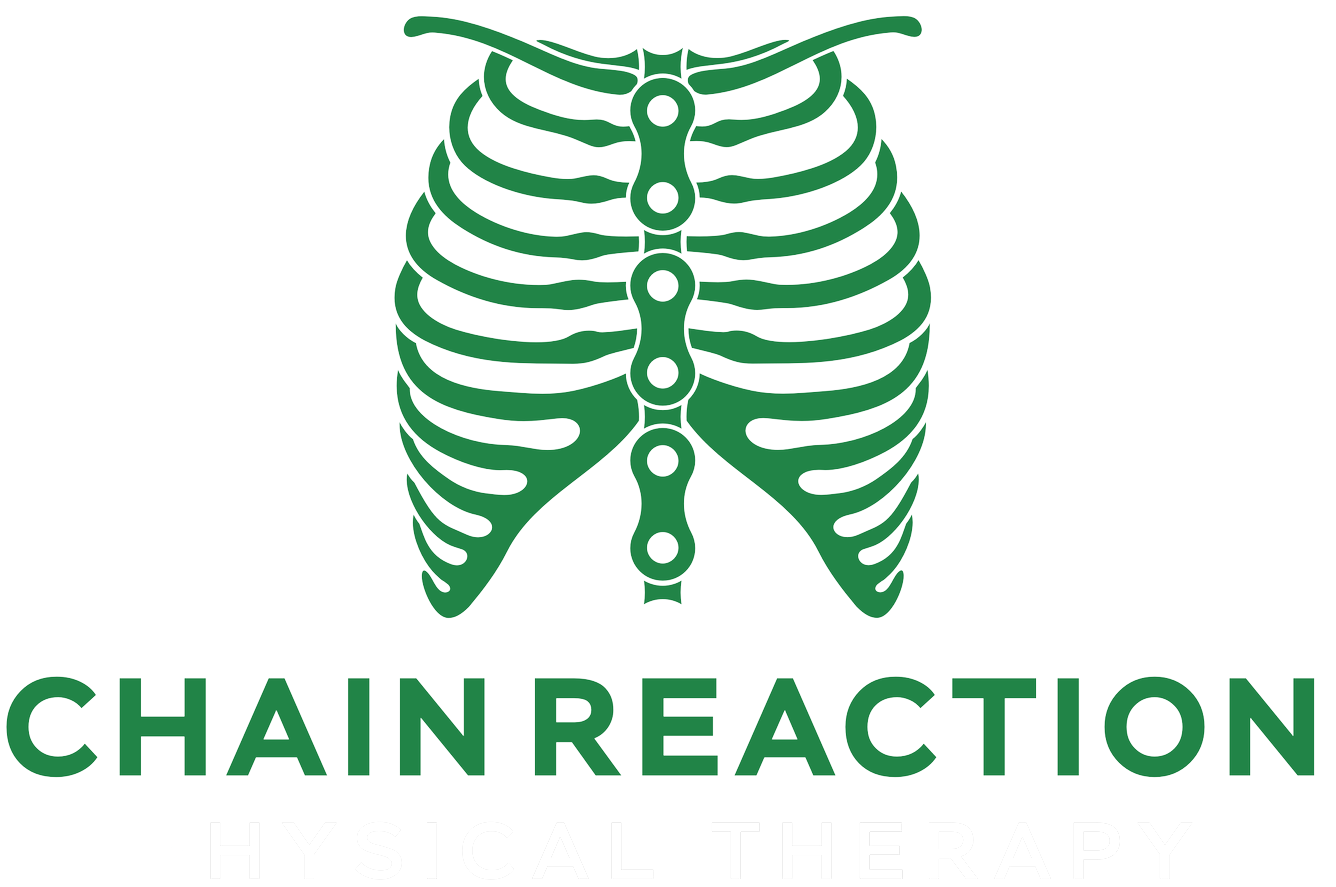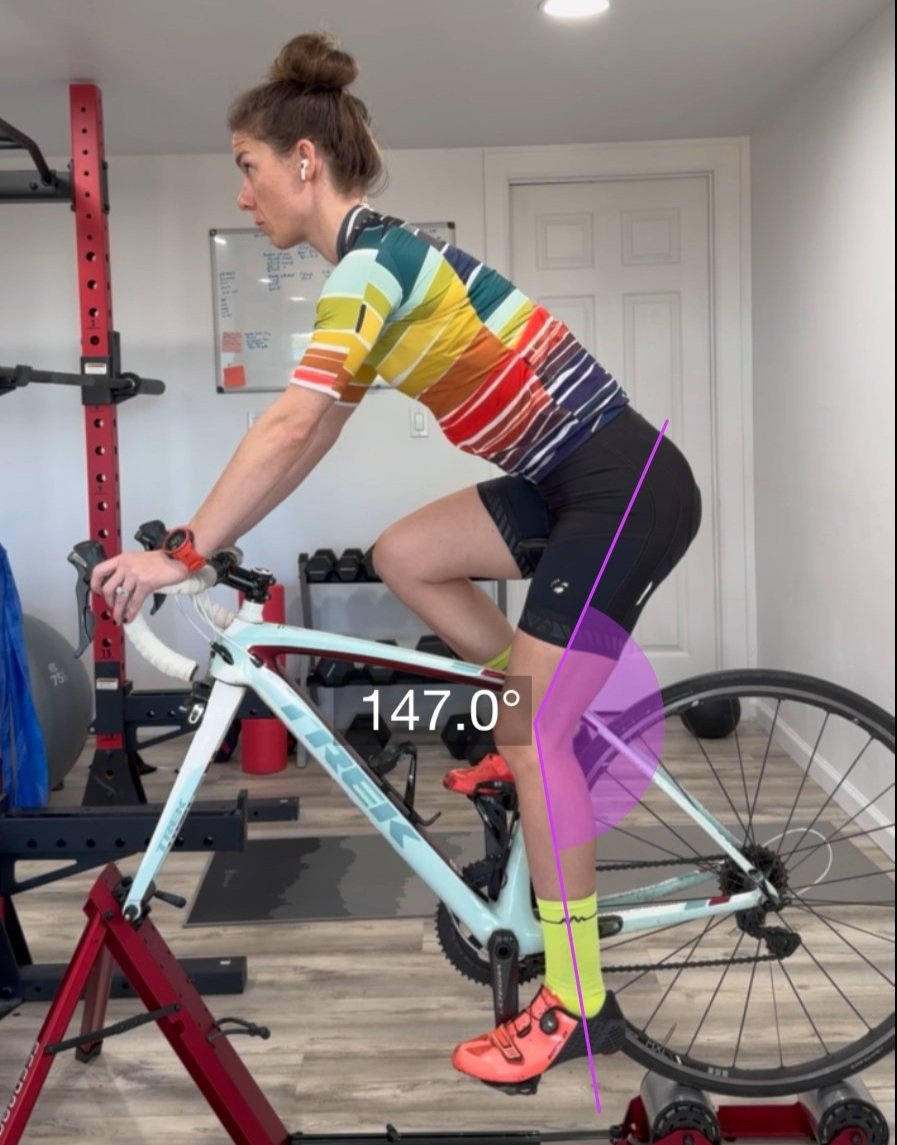Knee Pain While Biking? Your Bike Fit May Be The Culprit
If you’re experiencing knee pain while biking, there are several important variables to address to make sure you can ride your bike pain-free. These variables fall under two umbrella categories:
1. Bike Fit
2. Force generation
In this blog we will discuss #1: The Bike Fit. Be on the lookout soon for another blog post regarding the second important variable, force generation on the bike.
I’ve organized this blog by knee pain location, breaking down the main contributor for each. Read on to learn how to fix your exact knee pain with biking by addressing your bike fit.
Knee pain in the front of your knee
Usual culprit: Your saddle is too low
When your saddle is too low, at the top of your pedal stroke you have to bend your knee more than the ideal angle (around 65 degrees). This causes increased compression of the patella (knee cap) against the femur and can cause pain in the front of the knee.
What to do about it: Raise your saddle height so that your knee angle is somewhere around 145-155 degrees
Knee pain in the back of your knee
Usual culprit: Your saddle is too high
When your saddle is too high, to get to the bottom of your pedal stroke you have to extend your knee past what is maximally efficient. It will also cause you to point your toes down to reach to the bottom of your pedal stroke. This causes both the hamstring and the calf to have to work in a lengthened but disadvantaged position. Both of these muscles cross over the knee joint, and if irritated, can result in pain in the back of the knee.
What to do about it: Lower your saddle so that your knee angle is somewhere around 145-155 degrees
Pain on the sides of the knee
*Quick note for pain on the outside or inside of the knee* while pain on the sides of the knee can be due to bike fit issues, pain on either side of your knee is often influenced by movement patterns and force generation deficits. So if changing your fit doesn’t change your pain, make sure you read my blog to see how to change how your body is moving in the first place.
Pain on the outside of your knee:
Usual culprit: Cleat placement too far out
As we pedal, our knee should follow a (very) small figure 8 pattern, going slightly out at the top of our pedal stroke, and slightly in at the bottom. Issues begin when that figure 8 begins to widen. If your cleats are placed too far out, this will push your foot in. This results in excessive strain and lateral forces on the outer ligaments of your knee, resulting in knee pain on the outside of the knee.
What to do: adjust your cleats so that they are relatively in the center of your shoe from side to side (fore-aft cleat position is dependent upon and affected by numerous other variables that I will cover in other blogs, but the relative rule of thumb is to start with the cleat 1 cm behind the 1st metatarsal head or ball of the foot)
Note: Given the asymmetrical nature of the last (form) of the shoe, this line may not look dead center. Measurement is taken from spacing between the two sides of the sole, not from lining it up from tip of the end of the shoes.
Second Note: The author acknowledges it may be time for new mtb shoes
Knee pain on the inside of your knee
Usual culprit: Cleat placement too far in
Just like the above, cleat placement that doesn’t place your foot relatively under your hip will often result in pain on one side or another of your knee. If your cleats are placed too far to the inside of your knee, pushing your foot out, this will cause excessive force through the inner ligaments of the knee, causing medial or inside knee pain.
What to do: As recommended above, adjust your cleats so that they are relatively in the center of your shoe from side to side (fore-aft cleat position is dependent upon and affected by numerous other variables that I will cover in other blogs, but the relative rule of thumb is to start with the cleat 1 cm behind the 1st metatarsal head or ball of the foot)
See description for further information above
While this post covers common variables linked to knee pain, every rider brings their own unique mechanics, history, and needs to the bike. Factors like saddle width, crank length, cleat positioning, and saddle height can all play a role—and they need to be dialed in for you.
If you’re ready to take the guesswork out of your ride and finally feel confident in your setup, check out my Virtual Bike Rx. This is a personalized, individual service designed to fine-tune every detail of your fit—so you can ride stronger, longer, and without pain.
My Next Steps for You:
Not ready for a full virtual bike fit yet? Download my free Ultimate Bike Fit Checklist to discover the 5 most important variables to address with your fit
Read my blog: Sore Hamstrings After Cycling? Make Sure You’re Not Making These Mistakes
Learn more about how your bike fit affects your comfort on the bike with my blog: Lower Back Pain with Cycling Seat Position: How They’re Related




